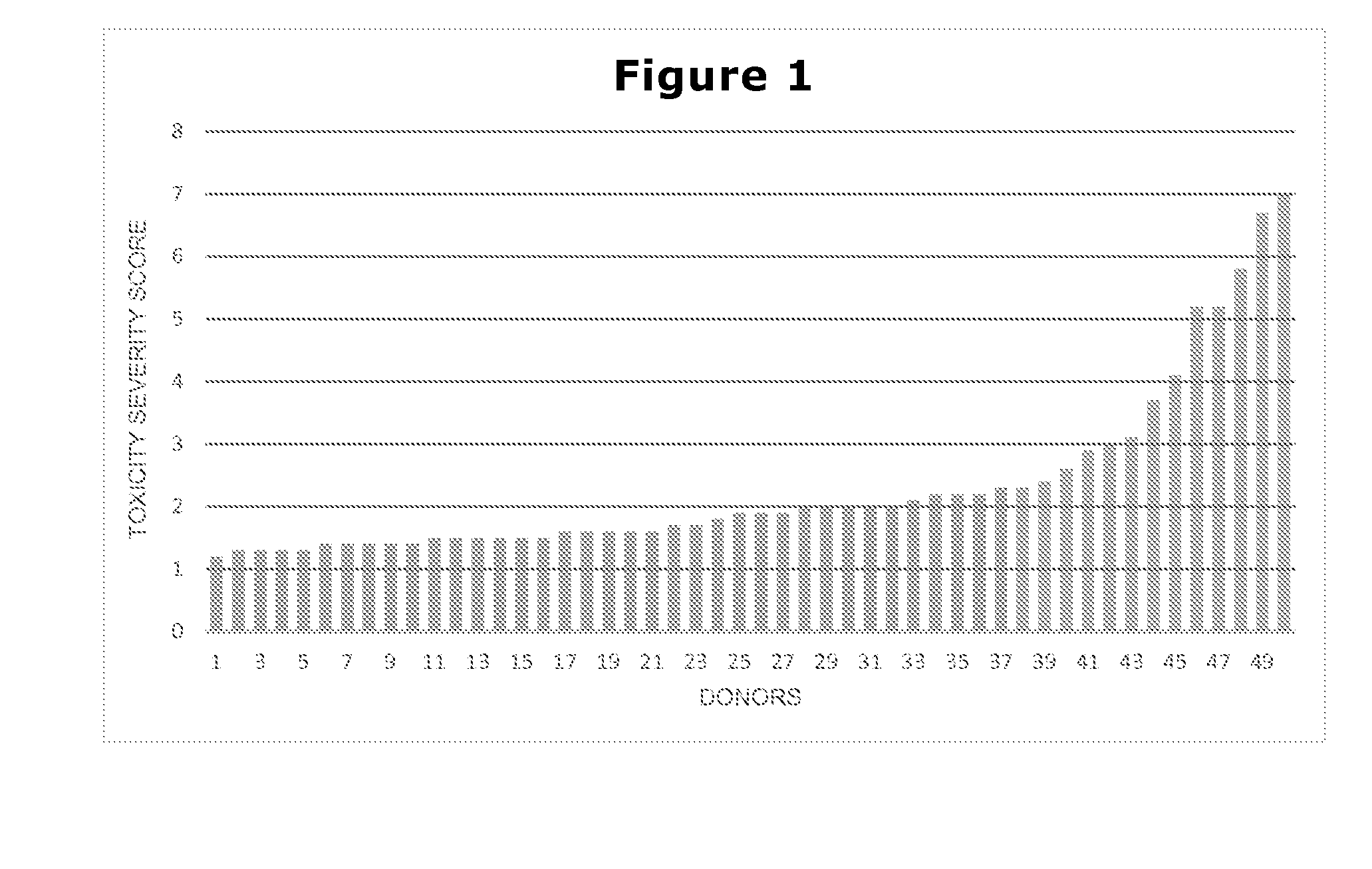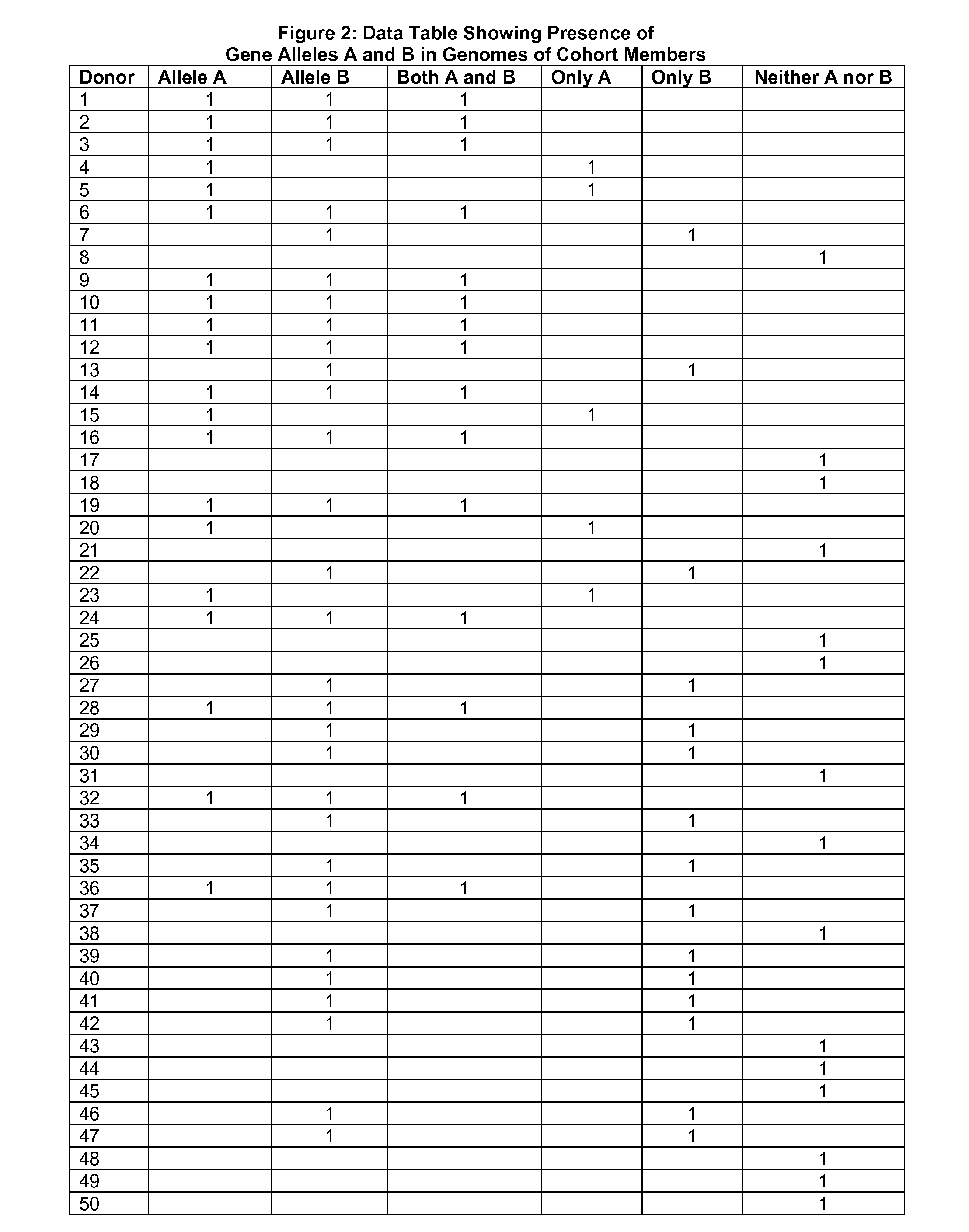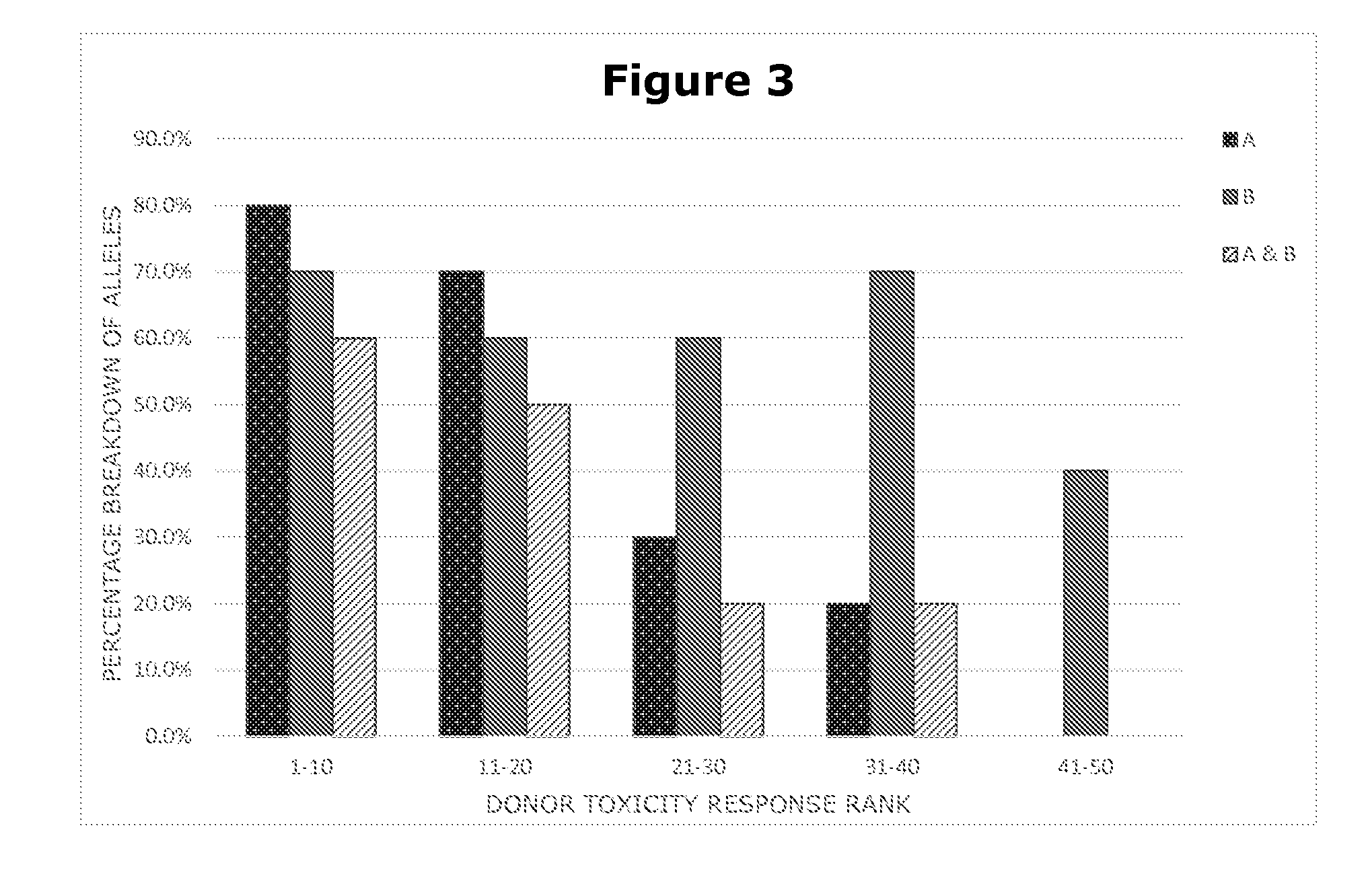Methods for Genetically Diversified Stimulus-Response Based Gene Association Studies
a gene association and stimulus response technology, applied in the field of gene association studies, can solve the problems of different progress patterns between the two, and the use of gene association studies to attack the diversity question in stimulus response situations (i.e., one human responds differently to the same stimulus as another human?) has proved more difficult, and achieves the effect of improving the ability of gdsrga studies
- Summary
- Abstract
- Description
- Claims
- Application Information
AI Technical Summary
Benefits of technology
Problems solved by technology
Method used
Image
Examples
example 1
Establishing the “Platform” for Multiple Enhanced Gene Association Studies
[0081]This example discloses the establishment of the platform for multiple enhanced gene association studies—i.e., a large, highly consistent quantity of cells for a large cohort of highly consistent cell lines, the associated genetic data, and common underlying experimental controls. In this embodiment, the purpose is to test multiple candidate pharmaceutical compounds to estimate the portion of people in the U.S. who would be adversely affected by a given compound, by conducting in vitro testing using a particular stem cell obtained from neonates, or newborn human infants (as described, for example, in U.S. Pat. No. 7,569,385), with pre-established endpoints as the indicator of adverse effects. Further, it is assumed that the chosen end point is, “percent of cells that fail to survive for 10 days under incubator conditions after administration of the compound, as judged by the MTT staining test”.
[0082]The f...
example 2
Conducting Enhanced Gene Association Analysis within a Single Experiment
[0096]In this example, in vitro toxicity tests, at various concentrations of a particular compound, are conducted on the 500 members of the highly standardized cohort. One of the data outputs from that testing is an indicator of toxicity for which a “normal” score is below 2.0, and a score of 7.0 or above is considered “significantly elevated toxicity susceptibility.”
[0097]Results from the test are shown at the end of this patent application as FIG. 1, in which the donors are arranged from lowest score to highest, with one bar representing 10 donors. Numerically, the scores for 270 donors are below 2.0, while the scores for 10 donors are 7.0 or above. The median donor scores 1.9; the lower quartile scores 1.5; and the upper quartile scores 2.3.
[0098]In this instance, standard attempts at gene association fail to produce any identifiable allele association with the toxic effect. Not enough donors have reached the...
example 3
Conducting Enhanced Gene Association Analysis by Comparing Results Across Experiments
[0105]In this example, in addition to testing the compound of interest, the same protocol is employed to conduct toxicity tests of three other compounds that are already on the market and have the same therapeutic purpose. Results from all four compounds are tracked on an individual donor basis.
[0106]One key analysis that is conducted is to compare the toxicity test score (as described above in Example 2) for each individual donor under challenge by the compound of interest to the toxicity test score of that same individual donor when challenged by each of the other three compounds. The measure employed is to divide the score generated by the compound of interest by the score generated by each of the other compounds. Donors for whom the resulting measure is above 2.0 (meaning that the toxicity reaction to the compound of interest was twice as strong or greater compared to the toxicity reaction of on...
PUM
| Property | Measurement | Unit |
|---|---|---|
| time | aaaaa | aaaaa |
| time | aaaaa | aaaaa |
| time | aaaaa | aaaaa |
Abstract
Description
Claims
Application Information
 Login to View More
Login to View More - R&D
- Intellectual Property
- Life Sciences
- Materials
- Tech Scout
- Unparalleled Data Quality
- Higher Quality Content
- 60% Fewer Hallucinations
Browse by: Latest US Patents, China's latest patents, Technical Efficacy Thesaurus, Application Domain, Technology Topic, Popular Technical Reports.
© 2025 PatSnap. All rights reserved.Legal|Privacy policy|Modern Slavery Act Transparency Statement|Sitemap|About US| Contact US: help@patsnap.com



